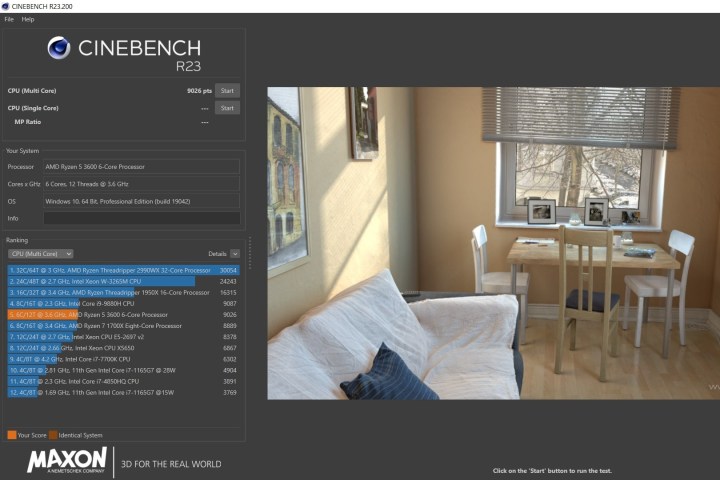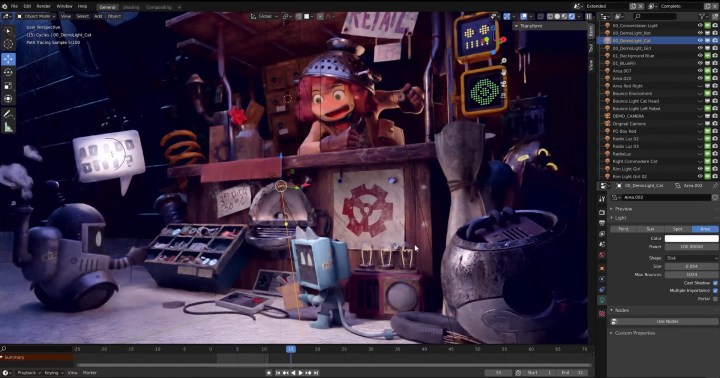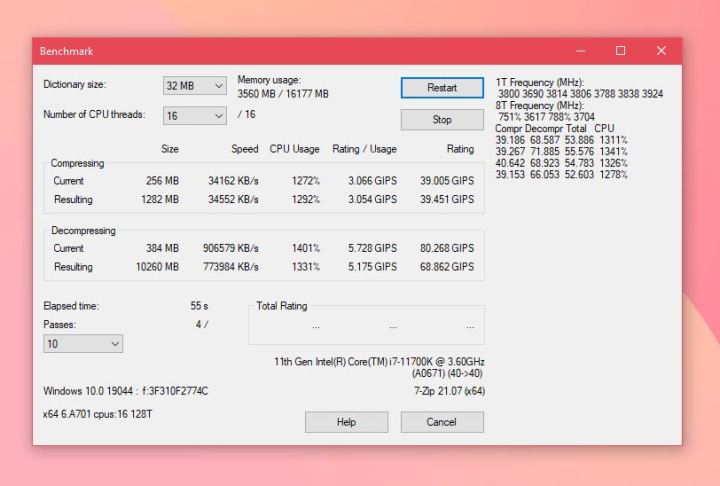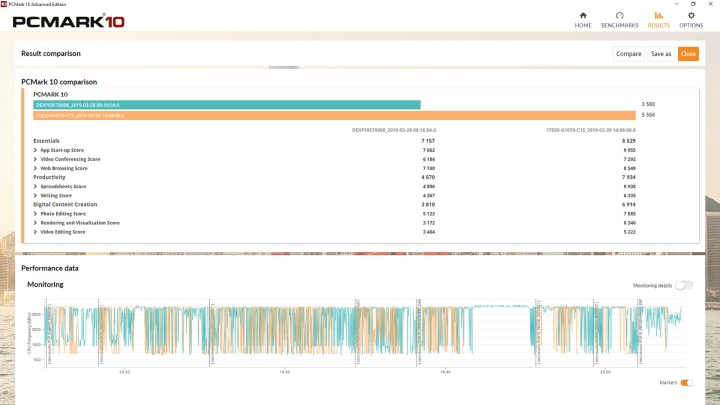One of the best ways to evaluate the performance of your CPU is to run one of the many great benchmarks that are available. They’ll test its raw performance in both single-threaded and multi-threaded tasks, and some will give it a general workload to handle to give a better idea of real-world performance.
Being the most crucial and powerful component of your system, benchmarking your CPU can help you understand its performance capabilities and whether you’re leaving any performance on the table or may need to upgrade. It’s also a great way to see just how much your PC has improved after the fact.
Here are some of the best CPU benchmarking applications.
Geekbench 5

Geekbench is an easy-to-use, cross-platform CPU benchmark suite. You can use it on a wide range of devices including laptops, tablets, and smartphones running on Windows, MacOS, Linux, Android, and iOS. It is capable of stress testing a CPU’s single-core and multi-core capabilities and measuring performance in areas including Augmented Reality and Machine Learning. The Compute Benchmark can test your system’s potential for gaming, image processing, or video editing. Additionally, it can test your GPU’s power with support for the OpenCL, CUDA, Metal, and Vulkan APIs. It also offers an extensive database to compare system performance across devices, operating systems, and processor architectures.
Geekbench is available as a trial version that covers most benchmark tests. For $10, you can get a license for either Windows, MacOS, or Linux. For $15, the entire suite can be used on all operating systems. For $100, you’ll get the Pro version that is meant for commercial use.
Cinebench R23

Cinebench is a popular test suite that can evaluate your PC’s hardware capabilities. Cinebench Release 23 is the latest iteration of the benchmark software, which is up to date with the latest CPU and rendering technologies to provide an accurate measurement of performance. Cinebench tests the CPU and OpenGL performance by making use of 4D image rendering tests. It stresses all of your CPU’s available cores to their maximum limit, making it an apt testing software for high-end systems. The results are based on practical and real-world performance, specifically for users who are in the field of content creation.
Cinebench R23 is available free of cost and supports Windows and MacOS.
Blender

Blender is a popular open-source 3D creation suite that supports modeling, rigging, animation, simulation, rendering, compositing and motion tracking, video editing, and game creation. The software also comes with its own benchmark, which can determine the rendering performance of your system’s CPU and GPU. The main purpose of this benchmark is to assess an optimal comparison between system hardware and installations and assist developers to track performance during Blender development. It consists of two parts — a downloadable package that runs Blender and renders on several production files, and the Open Data portal on blender.org, where the results can be uploaded. The publicly available online database can be used to compare your system’s performance score with other powerful systems.
You can download Blender for free, and it is compatible with Windows, MacOS, and Linux.
7-Zip

7-Zip is a file compression tool, but it also comes with its own built-in benchmark tool. A file compression test helps in understanding the capability of the CPU cache and system memory, while decompression is dependent on the CPU’s internal structure and how it manages random, branching integer operations. The 7-Zip benchmark creates junk data and uses the LZM algorithm to compress and decompress it without any data loss. The benchmark shows a rating in MIPS (million instructions per second), which is calculated from the measured speed, and it is normalized with results of Intel Core 2 CPU with the multi-threading option switched off and measured with an old version of 7-Zip. Like most benchmark tools, you can compare your results using an open-source database provided by 7-Zip.
AIDA64

Primarily used for system monitoring, AIDA64 is a fantastic tool for your PC. Not only can you monitor every single component and keep a note of the temperatures, but it also comes with various built-in benchmarks. There are a total of five CPU-based benchmarks, namely CPU Queen, CPU PhotoWorxx, CPU ZLib, CPU AES, and CPU Hash. Each benchmark stresses the CPU with different tests. For instance, CPU Queen is a simple integer benchmark that focuses on the branch prediction capabilities and the misprediction penalties of the CPU. CPU AES measures CPU performance using AES (Advanced Encryption Standard) data encryption.
AIDA64 comes as a 30-day trial, after which you need to pay $49.95 to enable all features and get technical support and updates for a year.
PCMark 10

PCMark is one of the oldest yet most significant CPU benchmark applications. Meant for Windows PCs, it features a comprehensive set of tests that cover the wide variety of tasks performed in the modern workplace, including office applications, video streaming, gaming, and web browsing. It also monitors various aspects during the test, including CPU load and temperature, and it can also upload the results to an online database so that one can compare them with other systems. PCMark is available as a free version that runs a single benchmark test, but you can unlock the rest of the tests and other features for $29.99. There is also a Professional edition that offers additional testing features for a rather steep price of $1,495 per year.
Frequently asked questions
What is CPU benchmarking software?
CPU benchmarking software runs a series of standardized tests on your PC and scores the performance, allowing for easy comparison between some of the best CPUs on the market. CPU benchmarking is useful in various scenarios, like when buying or building a new PC, before and after upgrading the CPU, or while overclocking the CPU.
What is the difference between single-threaded and multi-threaded scores?
CPU benchmark software usually offers a single-threaded and/or multi-threaded score. Single-threaded scores are more relevant for games and applications that are lightly threaded, meaning they rely on a single core to process most of the instructions. Multi-threaded scores are more relevant for modern games and applications that require more performance and distribute their instructions between multiple cores, such as video editing or transcoding.



